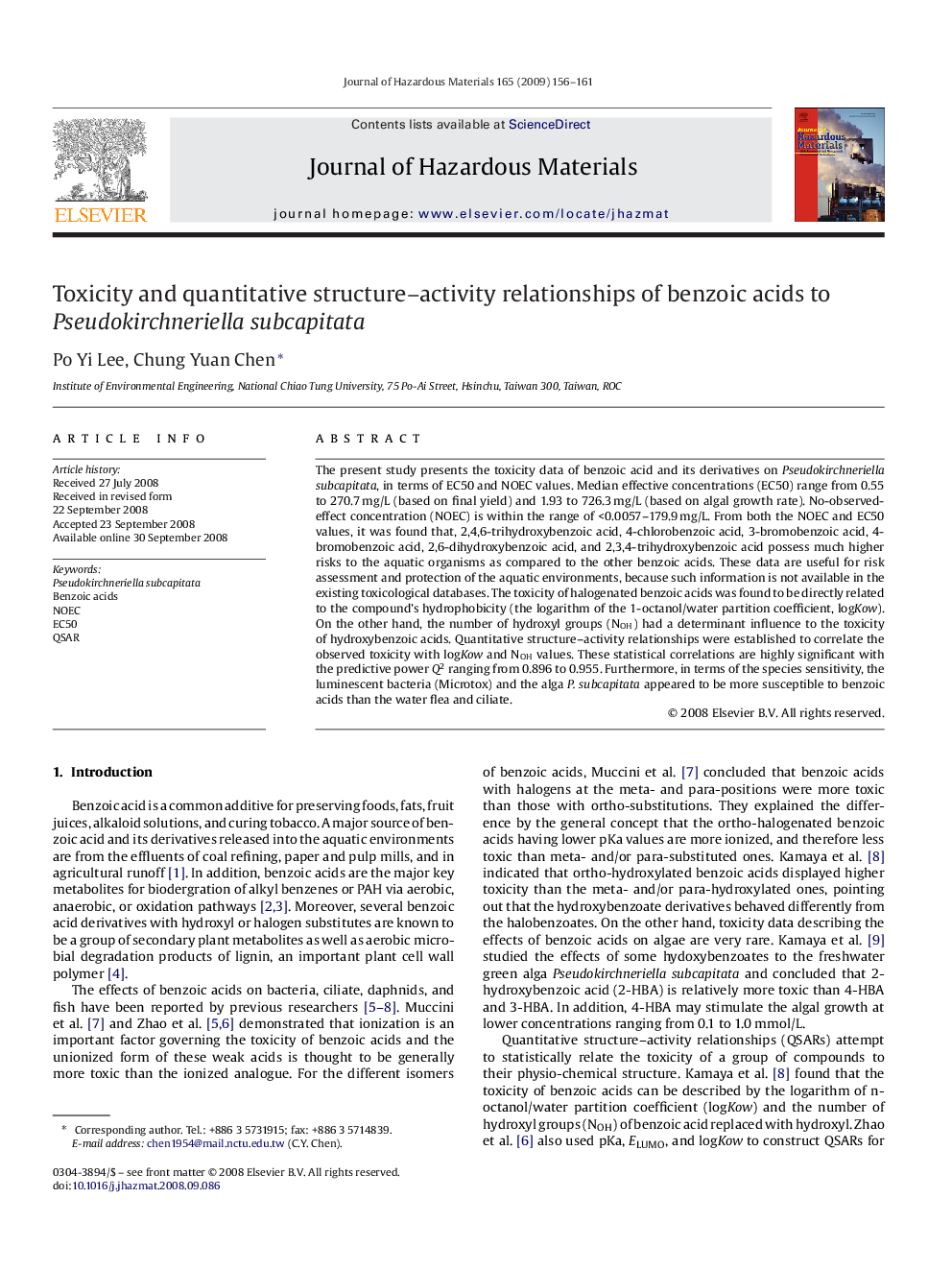| Article ID | Journal | Published Year | Pages | File Type |
|---|---|---|---|---|
| 582258 | Journal of Hazardous Materials | 2009 | 6 Pages |
Abstract
The present study presents the toxicity data of benzoic acid and its derivatives on Pseudokirchneriella subcapitata, in terms of EC50 and NOEC values. Median effective concentrations (EC50) range from 0.55 to 270.7Â mg/L (based on final yield) and 1.93 to 726.3Â mg/L (based on algal growth rate). No-observed-effect concentration (NOEC) is within the range of <0.0057-179.9Â mg/L. From both the NOEC and EC50 values, it was found that, 2,4,6-trihydroxybenzoic acid, 4-chlorobenzoic acid, 3-bromobenzoic acid, 4-bromobenzoic acid, 2,6-dihydroxybenzoic acid, and 2,3,4-trihydroxybenzoic acid possess much higher risks to the aquatic organisms as compared to the other benzoic acids. These data are useful for risk assessment and protection of the aquatic environments, because such information is not available in the existing toxicological databases. The toxicity of halogenated benzoic acids was found to be directly related to the compound's hydrophobicity (the logarithm of the 1-octanol/water partition coefficient, logKow). On the other hand, the number of hydroxyl groups (NOH) had a determinant influence to the toxicity of hydroxybenzoic acids. Quantitative structure-activity relationships were established to correlate the observed toxicity with logKow and NOH values. These statistical correlations are highly significant with the predictive power Q2 ranging from 0.896 to 0.955. Furthermore, in terms of the species sensitivity, the luminescent bacteria (Microtox) and the alga P. subcapitata appeared to be more susceptible to benzoic acids than the water flea and ciliate.
Related Topics
Physical Sciences and Engineering
Chemical Engineering
Chemical Health and Safety
Authors
Po Yi Lee, Chung Yuan Chen,
